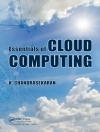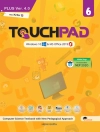This book demystifies the Tiny ML technology including market, applications, algorithms, tools and technology. the book dive deeper into the technology beyond common application and keep it light for the readers with varying background including students, hobbyists, managers, market researchers and developers. It starts with introduction to Tiny ML with benefits and scalability. It introduces no-code and low-code tiny ML platform to develop production worthy solutions including audio wake word, visual wake word, American sign language and predictive maintenance. Last two chapters are devoted to sensor and hardware agnostic auto ML and tiny ML compiler technologies.
More information is at https://www.thetinymlbook.com/
Mục lục
Contents
1: Introduction
What are AI and ML
ML Disruption
Scalability and ML
What is Tiny ML?
Tiny ML Applications
Tiny ML Benefits
Summary
2: Understanding Tiny ML
Need for Tiny ML
Benefits of Tiny ML
Hardware for Tiny ML applications
List of Tiny ML Verticals
Tiny ML with Examples
Summary
3: American Sign Language
Introduction
What is ASL?
Where is ASL used?
Why use Tiny ML for ASL
Inputs And Outputs
ASL Application Steps
No-Code Deep Learning Model
Low Code Deep Learning Model
Summary
4: Audio Wake-Word Detection
Introduction
Algorithms For Wake Word Detections
Where Are Wake Words Used
Tiny ML and Wake Word Detection
Inputs of the Wake Word Model
No-Code Deep Learning Model
Low Code Deep Learning Model
Summary
5: Visual Wake Word Detection
Introduction
What is Visual AI/ Computer Vision
Applications and the Scale of Computer Vision
Computer Vision and Tiny ML
Visual Wake Word vs Audio Wake Word
Defining Inputs and Outputs of the VWW Application
A Bit About Relevant Camera Measures
Features of the Arducam
No-Code Deep Learning Model:
Low Code Deep Learning Model
Summary
6: Predictive Maintenance
Introduction
Predictive Maintenance Solution Interface
Sensors and Analyses
Industry 4 Applications
Tiny ML and Predictive Maintenance
Sensors and Interface
Sensor Data and Equipment State
No-Code Deep Learning App
Low Code Deep Learning Model
AITS Differentiation
Summary
7: Auto ML for Tiny ML
What is Auto ML
Why Use Auto ML?
Auto ML Features
Auto ML frameworks
Auto ML empowers Tiny ML
AITS Auto ML – Stadium
Model Testing
Steps for Creating an AI Vision App on Stadium
Summary
8: Deep Sea, A Tiny ML Compiler
What is a Tiny ML Compiler?
Why Compiler?
deep Sea vs TF Lite Micro
The deep Sea Features
deep Sea Technology
Applications of deep Sea
deep Sea Scripting Using Python
deep Sea for Low Level Language (C++)
Microcontrollers Support in deep Sea
Giới thiệu về tác giả
Rohit Sharma is a technocrat, author and entrepreneur. He founded two companies, published several papers in international conferences and journals and authored two best seller books on machine intelligence and VLSI cell characterization. He has contributed to ML & EDA domain for over 20 years with TI, Ansys, Cadence and Paripath learning, improvising and designing solutions. He is passionate about many technical topics including AI accelerators, AIo T, EDGE AI, machine learning, analysis, characterization, and VLSI modeling. He has architected several products including guna – an advanced characterization software for modern nodes and deep C Compiler – an open source vendor independent deep learning library, compiler and inference framework microcomputers and micro-controllers. He enjoys mentoring and speaking at technical conferences, summits and workshops. He is an adjunct professor at California Science and Technology University and works for AI Technology & Systems (ai-techsystems.com) – a company he founded.












